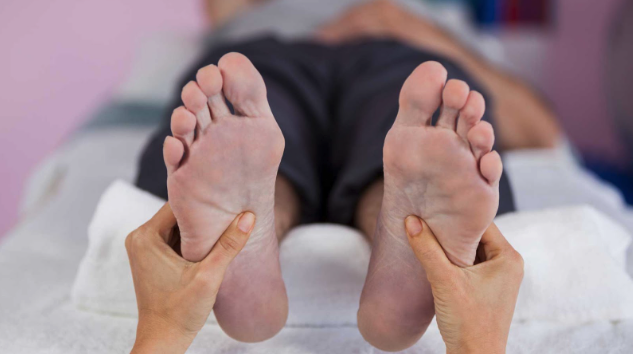People living with diabetes face unique challenges in maintaining their overall health, and foot care represents one of the most significant areas requiring attention. The relationship between diabetes and foot health extends beyond simple discomfort. High blood sugar levels can damage blood vessels and nerves over time, creating conditions where minor injuries become serious problems. This connection makes daily foot care routines and regular monitoring an integral part of diabetes management.
How Does Diabetes Affect Your Feet?
Diabetes impacts foot health through two primary mechanisms: poor circulation and nerve damage. Elevated blood glucose levels gradually damage the small blood vessels that supply your feet, reducing the flow of oxygen and nutrients to tissues. This compromised circulation makes healing slower and less effective, turning minor cuts or blisters into potential complications.
Nerve damage, medically known as diabetic neuropathy, affects sensation in your feet. This condition can cause numbness, tingling, or burning sensations. Some people experience a loss of feeling in certain areas, making it difficult to detect injuries, pressure points, or changes in temperature. Without proper sensation, you might not notice a small stone in your shoe, a blister forming, or even a nail that has grown too long.
The combination of poor circulation and reduced sensation creates a dangerous cycle. Minor injuries go unnoticed due to nerve damage, while poor circulation prevents proper healing. What begins as a small cut can develop into an infection.
How Can You Prevent Complications?
Daily inspection forms the foundation of diabetic foot care. Examine your feet thoroughly each day, looking for cuts, bruises, swelling, or changes in skin color. Pay special attention to areas between your toes and around the heel and ball of your foot.
Proper hygiene prevents many problems before they start. Wash your feet daily with warm water, then dry them completely, especially between the toes. Apply a thin layer of moisturizer to prevent dry, cracked skin, but avoid putting lotion between your toes, where excess moisture can accumulate.
Choosing appropriate footwear protects your feet from injury and pressure. Select shoes that fit properly without being too tight or loose. Before putting on shoes, check inside for objects, rough spots, or worn areas that could cause problems. Change socks daily, choosing ones that fit without bunching or creating tight bands around your legs.
Nail care requires particular attention. Trim toenails straight across rather than curved, and file rough edges smooth. Blood sugar control plays a central role in preventing foot complications. Work with your healthcare team to maintain glucose levels within your target range. Well-controlled diabetes reduces the risk of further nerve damage and supports better circulation.
When Should You See a Doctor?
Recognizing when professional medical attention becomes necessary can prevent minor issues from becoming major problems. Contact your healthcare provider immediately if you notice any cuts that don’t heal within a few days or signs of infection. Changes in skin color deserve prompt evaluation. Any area that feels unusually warm or cool compared to the surrounding skin warrants medical attention.
Pain patterns that develop suddenly or worsen over time should not be ignored. This may include sharp, shooting pains, constant aching, or new areas of tenderness. While reduced sensation is common with diabetes, new or changing pain signals often indicate developing problems.
Speak Further With a Physician
Managing diabetic foot health requires an ongoing partnership with qualified healthcare professionals. Regular checkups with your primary care physician and periodic evaluations help identify potential problems early and adjust your care plan as needed. Your healthcare team can provide personalized guidance and treatment based on your specific risk factors and current health status.
- How To Create a Personalized Weight Loss Plan
- The Importance of Foot Care for Diabetes: Prevention Tips You Need
- Cutting vs. Polishing Tools in Dentistry: Key Differences Every Dental Professional Should Know
- What Are the Symptoms of Depression?
- Understanding the Role of Neurologists in Managing Chronic Headaches


Leave a Reply